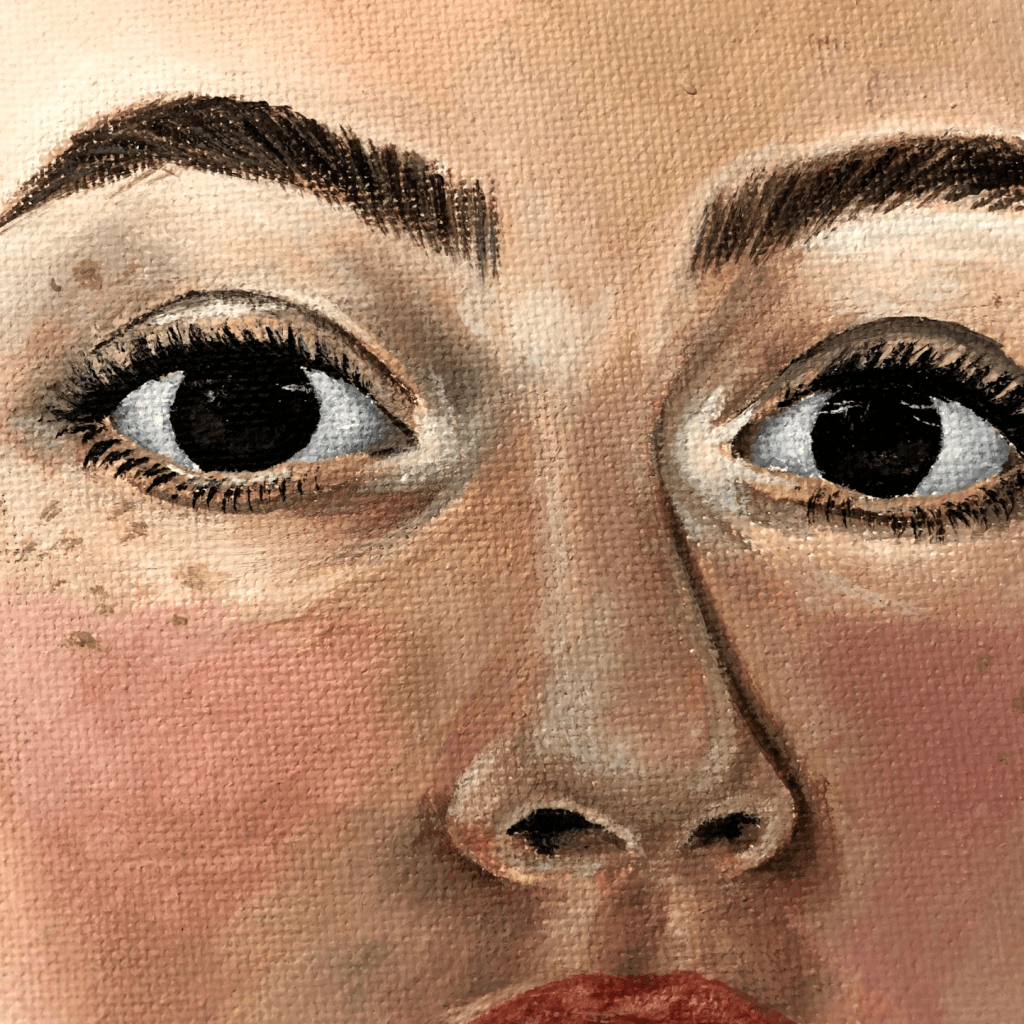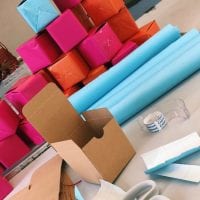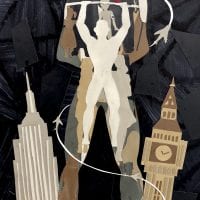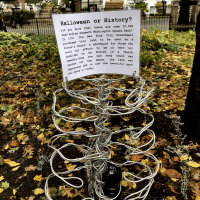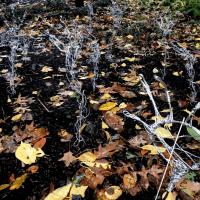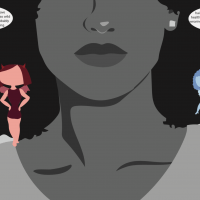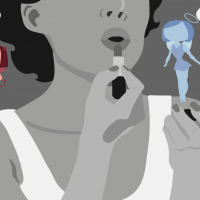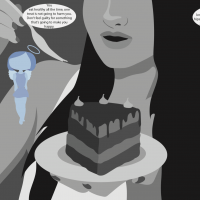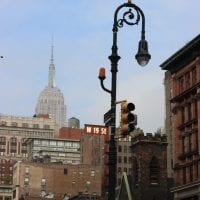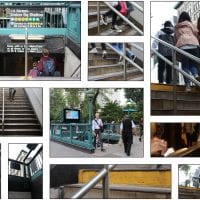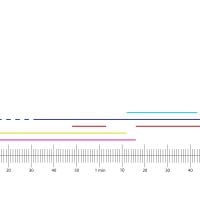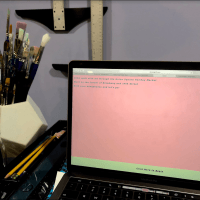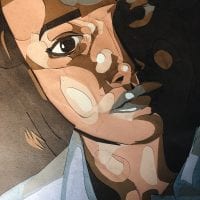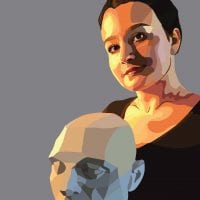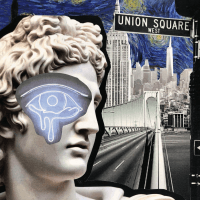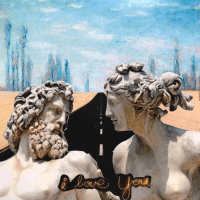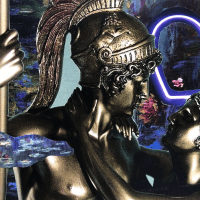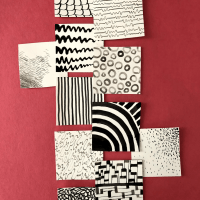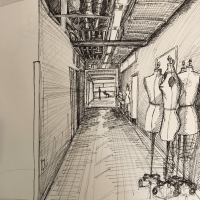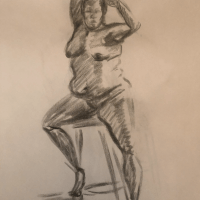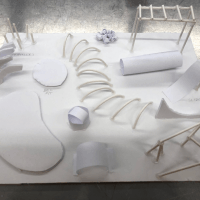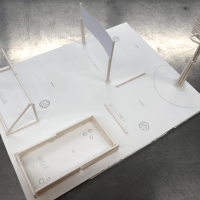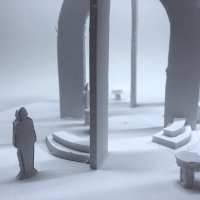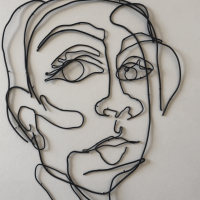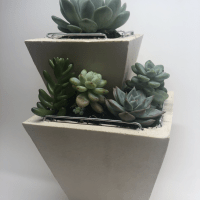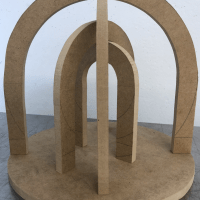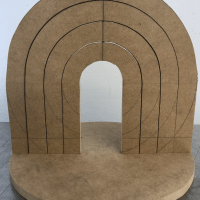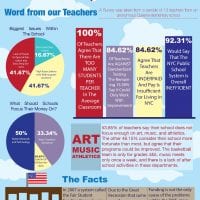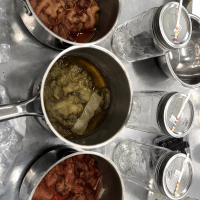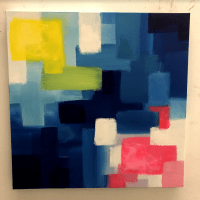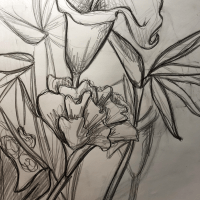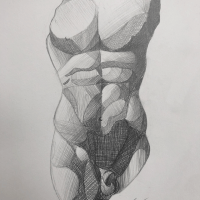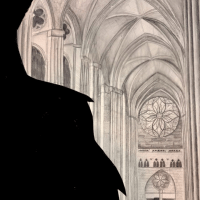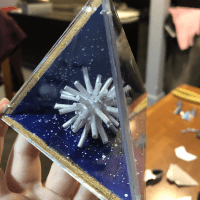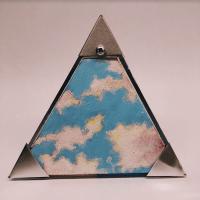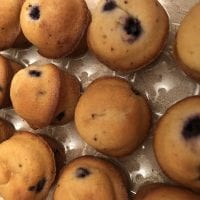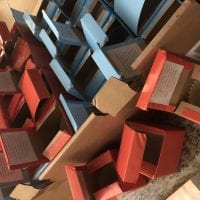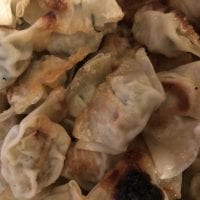Bio
I am Mariana Papadopoulos and I am finishing my first year at Parsons School of Design. It’s really crazy to me to sit down writing this, acknowledge that an entire year of college is over, and look back at everything I accomplished this year. I started this year, and quite frankly spent most of the first semester, nervous, alone, and feeling weird being separated from my friends and out of high school. I would commute into school every morning on a bus and two trains and follow the same routine back home at the end of the day. Today, I still have my same commute, but I am more comfortable, confident, and accomplished than I was when I started. I also started my career here as an illustration major, unsure of exactly what I wanted to do. Since then, I have switched my major to interior design and have a more clear vision of the future I want to create for myself. Throughout my time at Parsons, I have created a huge variety of very different work that has taught me so much.
Gallery of (almost) all the work I’ve done
Studio 1
- Bridge 1: The Gift
- Bridge 2: Translation of Partner’s Bridge 1
- Bridge 3: Installation in and about Washington Square Park
- bridge 3
- Bridge 4: final I did a series illustrating the pressures on women in society
Time
- The Walking Project: Showing the passage of time through photos
- Single Image Project: Transitional Space
- Multiple Image Project
- Sonic Analysis of a Song
- Sonic Analysis of a Space
- Sonic Portrait of a Space
- Site Specific Website
Drawing and Imaging
Studio 2
Space & Materiality
- Finished Piece Unlit
- Finished Piece Lit
Sustainable Systems
Drawing the Imagination
(Seminar 1 & Seminar 2 are not included in the gallery due to the lack of imagery I have to represent the work done in those classes. Also excluded are mere homework assignments, I chose to only feature the major projects.)
Summary
Throughout my work this year, there are far more differences than similarities, mainly because each class was so different and had a different goal. I think the similarities in all my work happen when my personal style and personality shines through the project. Whether it be in the concept, idea, or how the project is executed, I can always see myself within my work.
Themes: In Studio 1, I had very few instructions and was forced to really play with concept and creativity. Going into the class I expected to be drawing and painting, I was very wrong. My first project, the Gift Project, ended up being around 60 small, gift wrapped boxes that held food and questions. My concept was how food connects people and brings people together, so I gave my classmates things to talk about while they ate. It was very far from what I expected to be doing. in my other projects, I experimented with collage, wire sculpture, and adobe illustrator. Studio 1 was very conceptual. Seminar 1 was very closely intertwined with Studio 1, so all my writing dove deeper into my concepts and background. I actually ended up learning a lot about myself when writing my essays about my projects, and I really did enjoy that. Especially for bridge 1, where I wrote about the people in my life that inspired the talking notes I included in the gift project. In time I learned a lot about working with different types of media and telling stories in different ways. We used photography, sound, video, and eventually coding websites to show passing of time or represent a space or experience. It was all very challenging, but I learned a lot from working with different technologies, like adobe programs, coding, and recording devices, and I learned how to think in different ways. Drawing and Imagine was a lot of fun too because I really got to experiment and forced myself out of the box to be more creative. We used photoshop, collage, illustrator, drawing from the love model in different media, and creating mixed media pieces. it was very experimental and I created a lot of work that I wouldn’t have normally done. Going into the second semester, things were a bit more technical than conceptual. Studio 2 was about constructed environments, and we spent almost every project working with different materials and creating models. Our first bridge was a lot of fun because we had to choose and unlikely but ordinary object to create with, I did Q-tips. We then had to warp it to create as many different patterns/textures as possible. The rest of the class’s projects revolved around coming up with ideas and making models to improve union square. Seminar 2 was very helpful in developing my writing. Our first assignment dealt with reflecting on something from the previous semester, now our final assignment is to reflect on everything. I like how that came full circle. The final research paper was by far the most challenging. Not only was it difficult to find an interesting topic and research as much as possible about it, but all the revisions were hard because its hard to know when to stop and be satisfied with what you’ve written. I feel like I have come out of seminar 2 a better writer who is capable of writing a research paper and a bibliography. Space and Materiality was probably my favorite class and the class I learned the most in. The themes in this class changed with every project. We began with wire, first in 2D and then in 3D. Then we made paper polyhedrons to prepare for our next project: making a tetrahedron out of linear materials with mechanical connections. I chose wood and plexiglass to work with, and finding a way to connect the two with no tape or glue seemed impossible. Then we made a lamp, I used wood again. Then we worked with plaster. We made a foam core mold, sealed it, and mixed our own plaster to pour and create our form. I created a succulent potter. Our final project is to use any material we want, except cardboard, paper, or foam core, to create a model of something that could be put in a park or public space. I am in the process of creating a wooden pavilion that can transition into a stage. Working with all these different materials and mechanical connections has really taught me so much. Every project seemed so challenging, until it was time for the next one which was even harder. In Sustainable Systems, we explored sustainability in many different ways. We had a lot of homework of readings, watching documentaries, and going on trips, and all our major projects taught us a lot. We started by making a research poster of a wicked problem within a system. This thought us to identify issues within big systems, look into it, and transform that information into visuals. The next project was a natural dye lab where we learned to dye fabric using fruits or vegetables along with mordants and fixatives. This came in handy for the next project, where we once again had to create dye. This one was a bit more complex because we had to use water samples collected from all around the city and test their pollution. We then branded and marketed our dyed products. The final project was a toolkit made to help a community. Finally, in Drawing the Imagination, I was once again challenged to channel my creativity in a variety of media. We did both creative projects as well as figure drawing. My favorite project from this class may have been the dream journal, a single spread of it is shown in the gallery, but the entire little book is filled with color-coordinated paintings of my own imagination.
Skills: There are so many skills that I’ve learned throughout the year. I touched upon almost all of them in the previous paragraph, but it is interesting to see how they’ve compiled onto one another. Studio 1 taught me to be conceptual, which has shown up in basically every project I’ve done. Seminar 1 taught me how to explain my concepts and ideas, which I’ve had to do in LP posts for basically every project, especially in sustainable systems and space and materiality. Time, drawing and imaging, and studio 1, all got me comfortable with adobe software which I’ve used in studio 2 and sustainable systems. I will take what I learned from analyzing a space and developing a way to improve it from Studio 2 and apply it to everything, especially in the career path I’m taking. I will leave Seminar 2 a better writer and apply those skills in everything. Space gave me such a wide range of materials I now know how to work with and can use those skills in all my classes. The conceptual things I learned in Studio 1 and the creative and technical drawing skills I learned in Drawing and Imaging come up again in all my work for my Drawing the Imagination class, and will stay with me as I continue to draw and paint. Going through first year felt like a whole bunch of random stuff I was learning, but continuing through the semesters and now looking back like this, I realize how skillfully everything piles up to lay a healthy foundation of skills I will use forever.
Connections: I think the biggest connections between academic work and studio work were with Stdio 1 & Seminar 1, Studio 2 & Seminar 2, and Sustainable Systems. Studio 1 and Seminar 1 were very closely connected. So for every studio project I had, I had an academic paper that further developed the topic. This was particularly prominent in Bridges 1, 3, and 4. Bridge 1 was all about me and the most important people in my life. Doing that set of essays really taught me a lot about myself and my most important relationships. Bridge 3 was the instillation in Washington Square park. Not only did the project have to go into the park, but it had to be connected to the park’s history. This entailed a lot of research and on sight interviewing, and it was all later compiled into a book. For Bridge 4, our topic could basically be about anything we wanted, and I chose body image. So I did a lot of research on body image, how women’s body image has changed through history, how it continues to change, etc. So the connections in Studio and Seminar 1 were a lot about delving deeper into concepts. In Studio and Seminar 2, the connections were less connected, but no less beneficial. Having such different assignments really expanded my knowledge on constructed environments. My finals for both classes had to do with different things that could be connected. In Seminar, my paper was all about landmarks and how important they are and other things related to that, in studio it was a whole plan on an improvement to Union Square Park. Both topics have to do with the betterment of the City of New York, my home city and the one I plan to work in in the future. I want to be an interior designer, and learned a lot throughout the academic research in seminar and the planning and concept creating in studio. Finally in sustainable systems everything we did had a scientific, ecological, or societal background to it and was turned into a making project, which was actually so cool. Research was done about a wicked problem within a system, in my case the NYC public school system, and it was turned into a visual poster that clearly conveyed the information. Water pollution and water testing was learned about and water samples were taken, then they were died naturally, designed, packaged, and turned into a brand that would teach people about water pollution. The toolkit was also carefully researched and executed, meant to help a group of people, be user friendly, but also be made to represent a clear brand and have a cohesive aesthetic. Although Parsons may not have your typical academic classes the academics, the reading, the writing, the research, and the data collecting are all integrated into our curriculums and applied into studio projects which take the concepts further.
Exciting Projects/Papers: I think the projects I got most excited about this year were the ones in Space and Materiality. The thing that made these so exciting and intriguing to me was the challenge of the different materials. We used a lot of things I had never worked with before, and gained access to shops and tools I had never used. We also had to do a lot of problem solving, using mechanical connections and no tape or glue. The challenge of all these projects as well as the new tools and techniques I was using got me the most excited. Then once the project was over and I executed it and succeeded, it was so rewarding to see my finished product and I was so proud of everything I made.
Further Research: I think further research could always be useful. The biggest research paper I did this year was the final for Seminar 2 about landmarks in New York City. I ended up with 7 sources, 12 pages, and I’m not sure how many examples to argue my point. However, it could have easily been longer. I could have researched so much more about landmarks, the most famous ones, in what instances were they changed, etc. I’m not sure if it would have helped my paper, because it may have steered me away from the point I was trying to make, but I think it definitely would have added some interesting facts and ideas. Further research probably could have went into my Toolkit for sustainable systems. The tips and tricks booklet I created was very much about personal tips and tricks I have realized and came up with, I could have expanded that through researching and surveying other people. I had also made a map with cheap places to eat, that could definitely have been further researched and included a wider variety of eateries. This is a hard thing to think about, because work can always be taken a step further. The more you think about it, the more you add to it, the more you research it. But then, is it ever done? I think the toolkit is the project I probably would like to go back and add more research to.
HIGHLIGHT 1: Tetrahedron Project for Space and Materiality
I chose this as my first highlight because it is the first project working with things like wood and plexi, and I got to be creative with he surfaces. Id like to start off by saying how much I enjoyed this project. It was the first time I got to work in the shop in the making center and it was so incredibly cool. To make my tetrahedron, I chose wood and a type of plexiglass. I knew I wanted to work with wood because theres a lot you can do with it as a planar material, its sturdy, and can be used with all the tools in the shop. I chose the plexiglass because I thought it would give a cool transparent element to the tetrahedron. I drew my triangles onto my materials, two wooden ones and two plexiglass ones. I used the smaller band saw and later the sander to cut out and refine my wooden triangles. I used a scoring knife and jewelers saw to cut out the plexiglass ones. Once all four were cut, I realized the wooden ones were too small in comparison to the plexiglass, an error that likely occurred by sanding too much. So I redid them, making sure to cut with the band saw farther from the drawn line and then sand to the line. The wood was relatively thick, only a quarter of an inch, but two thick to simply press up against one another, so I used a file and sanding block to sand angles into one side of each piece of wood. I sanded until they fit together well. Now to decorate the sides. I started with the outside of my wood pieces. Inspired by the ceilings in the New York Public Library, I painted on dreamy skies with clouds. I had these great plexiglass sides, so I knew I wanted to paint the inside of the wood as well, and put something into the tetrahedron. Since the outer sides were the daytime sky, I painted the insides navy blue and splattered white paint to create stars. Now to make the inside piece. I originally was going to make a planet, but then made a star. At first I cut and glued q-tip sticks together to make a star and painted it silver. The q-tip sticks were far too thick, so I repeated the process with toothpicks. It was perfect. I then suspended it on a silver piece of thread, pulled it through the top of the tetrahedron, and attached it to the screw hole underneath the cap (the “cap” will make more sense now as I explain how I connected them). Then came the issue of connecting them. I experimented with wire and it did not work. Given my materials, creating some kind of sheet metal tab would be the most logical solution. However, I did not want thick tabs on each side of my tetrahedron. They would be distracting, and drilling holes into plexiglass is risky. I thought of what other kind of tabs I could make, and came up with making a little cap for each corner of the shape. It would be simple and much more subtle than the tabs on the sides. I cut out triangular caps that folded up into a tetrahedron without the bottom, one flap overlapped. I made sure each overlapping flap was on a wooden side, and drilled a tiny hole into it, then crewed in a small screw. This meant no plexiglass would be drilled into, and there would be one single screw on each corner, keeping it clean and simple. I am so beyond happy with how it came out and am proud of my construction of it and my solution for the connections. It was something new to make and inspiring. I had so much fun with it and am so proud of the result.
HIGHLIGHT 2
My second highlight is the first project I ever did at Parsons: the gift project for Studio 1. To me, the gift project was about sharing something important to you with the class. When I sat down to think about the thing that is most important to me, I realized it was not a thing at all. The most important things in my life are the people closest to me. But how could I express that in a way that would make my classmates feel as I feel. How do people really build relationships? My immediate thought was food. People bond over food. When you go on a date, you typically go to a restaurant or cafe and learn about one another over a meal. Friends gather and catch up at their favorite spots to eat. Families gather and reconnect over home cooked dinners. Food lies at the center of our most important relationships. Now how could I successfully convey my point? My first idea was to do a series of paintings. Coming from more of a fine art background, when given an art project, my first instinct is to go straight to drawing and painting. The idea was born as a series of paintings that depicted the meals i most commonly share with those closest to me. Breakfast would have been a scene at my favorite diner, where my boyfriend and I have been going since we were best friends. It’s the place our relationship grew, and therefore it holds a special place in my heart. My painting would have included the table of our favorite booth with my eggs and french fries, and either a BLT or waffles for him. Of course I couldn’t leave out the mini muffins that are always included in the meal. The lunch scene would have been the table at the best sushi place in town, filled with a spread of various rolls and dumplings. My best girlfriends and I often go for sushi lunches where we talk about the new things going on in our lives, changes, news, a bit of gossip… we can talk about anything, and there’s no better way to do that than while enjoying our favorite food. Dinner could not be anything but the spread of food on my Grandmother’s table. She is simply the best cook I know, and her food brings our family together and keeps us close. I would have painted a full scene of traditional Greek food and some of my favorites that she makes. The paintings seemed like a good idea, but would they really get my message across? Or would they just look like three still lives with no meaning? Even if I stood there explaining the meaning behind my work, it seemed a bit lackluster. How could I immerse the class in my ideas about how food and relationships connect and how important the relationships are to me? Could I possibly make them learn about each other’s relationships while simultaneously getting them to know each other a little better? The answer was simple, I’d simulate the meals that my relationships grew around. My painted scenes slowly transformed into a series of boxes, questions, and snacks. I ordered 3×3 thin cardboard boxes, wrapped them in different color wrapping paper, typed out color coordinated blurbs for each “meal,” glued them to the inside lid of the box, and added small foods inside. Breakfast was inspired by my boyfriend and the diner, so I created a set of little pink boxes that will soon be filled with mini muffins. The inside of the box lid gives a brief sentence on what breakfast reminds me of, as well as a few questions about relationships for my classmates to discuss amongst themselves. Lunch was inspired by my best friends and sushi, so the set of blue boxes will hold dumplings. That blurb will quickly explain how my friends and I love sushi, and the questions up for discussion will talk about friendships. Dinner is all about my large, Greek family, so the orange se of boxes will hold individual spanakopitas as well as questions about family. Each student and teacher will get their own three boxes and given the chance to eat the little sample meals and talk to one another.
The insides of the boxes read: Breakfast makes me think about all the times my boyfriend and I went to the best diner in Whitestone. What have your relationships been like? What was the most significant relationship you’ve ever had? Have you ever had a serious relationship? Do you even want one? If you’ve had a first love, what was it like?
Lunch makes me think of going for sushi with my best friends. Who are you best friends? How
long have you known them? How did you meet? Are things different now in college?
Dinner reminds me of family dinners at my Grandma’s house. What’s your family like? Is it big or small? Are you close? If you’re away for college, what’s it like being away from them?
The goal of my mock meals is for my classmates to learn about one another’s relationships and the people that are most important to them. By getting them to mingle, hopefully they will build stronger relationships with each other and understand how much my loved ones mean to me, all while enjoying a few snacks.
I chose this as a highlight because of how much I got out of my comfort zone with it. Being in an art class, my immediate thought was to do traditional art like drawing and painting. It turned out that the goal I wanted out of my piece worked out better as a sort of performance than paintings. So the hardest part was shifting away from what I’m used to to convey the message I wanted. I found it surprising how far I came. I just kept writing and jotting down notes and one thing blossomed into something completely different.
- Bridge 1: The Gift
Conclusion
Looking back at everything from this past year is really crazy. Going through it, I didn’t realize how important everything I was doing would be, or how everything would connect so perfectly and teach me so much. Now that its time to think about the future, I’m nervous all over again. there are so many new questions I want to pursue, however, they are much less scattered that First Year. My questions fro second year and going forward are much more major specific. What does it really mean to be an interior designer? What does being an interior designer entail? What kind of classes will I be taking? What will I be making? What are the best internships to get? Would it be possible for me to build my own company and be successful? There are so many questions I have, and I hope that continuing in my major gives me a lot of answers and direction. How might one project generate another? This is a really simple question, but also not simple. It’s not simple because it is not linear. it won’t be the same for every project. But I do think that with every idea you have and with every project you make, you learn something. You learn something about yourself and what you like to make, you learn how to make something, you learn how to problem solve, how to do things a different way…with every project you do you are coming up with new ideas that can always be applied to future projects. And with every project you do, there are a ton of ideas that you dint end up using that could be recycled for a future project. The new skills and techniques I want to learn are just about endless. I want to learn everything and how to do everything. but right now, thinking in this moment, I really want to learn how to use the laser cutter. I think it is such an awesome tool and you can make so many precise, incredible things with it. I also had so much fun with working with wood and would love to continue pursuing that and learning more about it and getting better at it.
